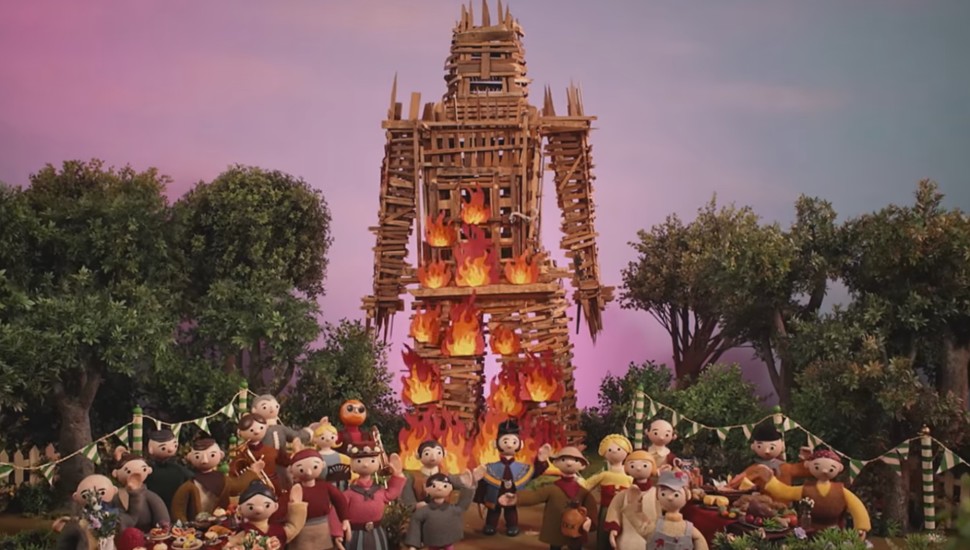
I had just been alternating between an urgent phone call to my mother, panicked messages to my boyfriend, and an endless but frantic scrolling through an underwhelming Facebook feed when I found out that Radiohead released a new single. Once my mom hung up the phone and my boyfriend was at work, I got a chance to listen to their brilliant new track. Radiohead’s newest song was about many things, but above all else, it was about the exact anxiety I was going through when I found it.
“Burn the Witch” is unsubtly about hysteria and surveillance. It’s obviously a vague take on either the NSA or the hypervigilance of celebrity culture (or both as only a song of the 21st century can be), but it is the narratives of anxiety that the song and video espouse that make it more complex than merely an anti-witch hunt anthem. In its rushing strings and sporadic notes, I found traces of my own staccato breathing. The song gave words to the sensation I was feeling: I was in the midst of a “low flying panic attack.”
Thom Yorke, over rapid vocals, sings in his haunting, placeless voice: “burn the witch.” But he is not a ringleader orchestrating a movement. He’s just a man singing a “jukebox,” “sixpence” medley meant for the masses. Everything is shadows and signs, crosses and tests in the anxious world Radiohead creates. There, self-control is self-preservation: “avoid all eye contact / do not react.” This is an atmospheric song, using lyrics sparingly to depict a feeling. And by nature of this textual brevity, even lyricmaster Yorke himself cannot create subtle references to the Edward Snowdens of today in just four minutes. The song conjures a modern mood—a feeling of being watched rather than the details of any specific headline.
What Radiohead does instead is expand on a history of anxiety, surveillance, and panic by creating a stop-motion video to accompany their newest single. It follows an inspector surveying a model town, aptly named Model Village. He’s led around by a mayoral figure through various scenes and displays, scribbling furious notes at each of the vignettes of quaint small town life. An easy reading of the video is that the anxiety Yorke sings of is of the townspeople who are literally watched and literally judged. And ultimately, this is a triumphal song, since they prevail by burning the man who was judging them.
Yet there is a more subtle tale of anxiety underway in the short film. The inspector senses things are up, wiping his brow at an eerily perfect model of the already too perfect town and raising eyebrows when blood spills out of a delicious, Thanksgiving-style meal prepared for him. These details reveal the pervasiveness of anxiety since as viewers we see the inspector watching and judging when, in actuality, it is the townspeople who watch, control, and ultimately trick him.
The duality of this reading suggests that anxiety is just a vague sense of wrongness, growing out from the tiniest clues of failure that an entire town’s worth of pleasantries or the reassuring voices of my loved ones can’t fix. Something may be up, but is it paranoia or truth? Radiohead succeeds at capturing the details that fuel fear, creating an anthem for people like me who get trapped within their threatening minds: a world of reverberating thoughts and Yorke’s ominous coos. “We know where you live,” he sings, but as the lone speaker of the song, he epitomizes the anxious mind: the damning and the damned, the problems and their cause, the mob and the witch.
